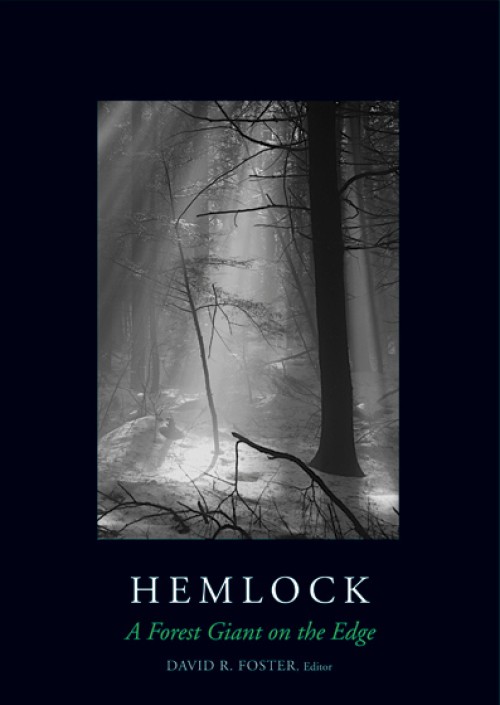by David R. Foster, Editor.
Yale University Press, 2014
I had never thought of eastern hemlock as a forest giant until I visited the mountains of western North Carolina. In my northern New England experience, an old-growth hemlock was a good-sized tree, often equal in girth to eastern white pine, but lacking the pine’s impressive height. But that old-growth hemlock stand in the southern Appalachians had many trees over 140 feet tall and 400 years of age, and it changed my measure of a species that has no ecological counterpart in our eastern forests. But now those southern giants are gone, killed by hemlock wooly adelgid, and as I sit here in my office on the Maine coast, the naked limbs of the first hemlock in our yard to succumb to this exotic insect portend things to come. Hemlocks grow thickly in this cool, moist, coastal environment, and it’s hard to imagine our woods and stream banks without their deep shade, or spring without the songs of black-throated green warblers and blue-headed vireos or the brilliant orange flash of a blackburnian warbler high in the canopy.
In Hemlock: A Forest Giant on the Edge, editor David Foster (director of Harvard Forest) and coauthors explore the natural and human history of hemlock from the end of the last ice age through its recent and precipitous decline as the adelgid races northward. This is not a chronological history or a depressing gloom and doom monologue.
Rather, it is a fascinating story told as the authors explore the results of nearly a century of research projects about what they call a “foundation species,” one that is abundant in the ecosystems where it is found, is at the base of the food web, and has many species that interact with it. As they also note, a foundation species is something that we will miss when it’s gone.
The authors take a refreshing approach by stepping out from behind the veil of drabness that is the required style of technical scientific writing these days and personalize the story by describing their own interactions with this amazing tree and the ecosystem it shapes. You’ll learn much about hemlocks that will make your time in the woods richer and your knowledge of ecological history deeper. However, the reading is all the more interesting because the authors share their feelings about being in a hemlock woods and conducting objective science while the foundation of the ecosystem is collapsing.
This book is not a reiteration of facts and figures, but a well-written portrait of hemlock, its role in New England’s forests, and the lives and character of the foresters and other scientists who have studied it. Rich, full-page black and white photographs by the authors and from the Harvard Forest archives illustrate the text. If you enjoyed “The Pisgah Forest” by David Foster in the Spring 2014 issue of Northern Woodlands, you’ll enjoy this book.


